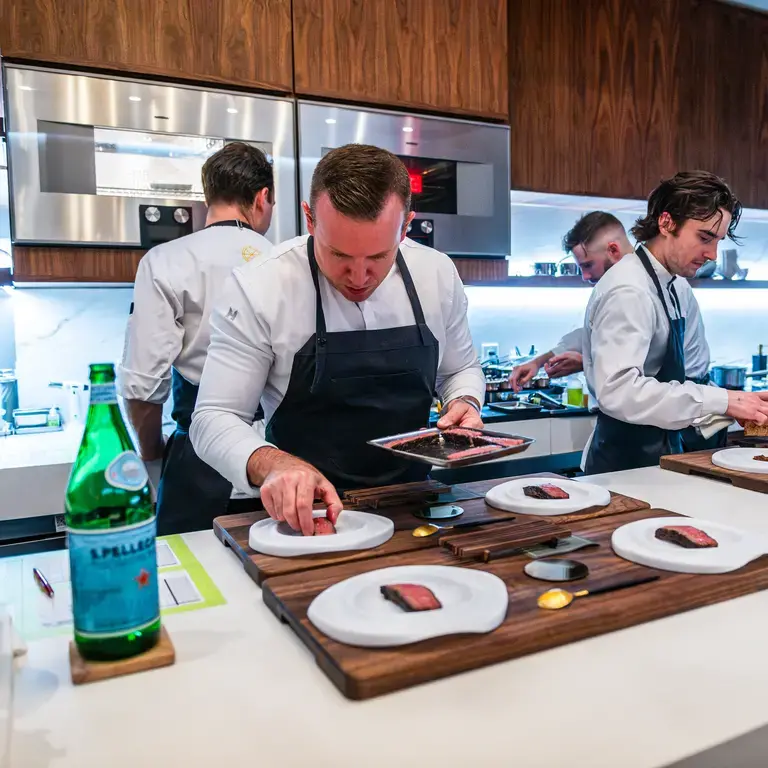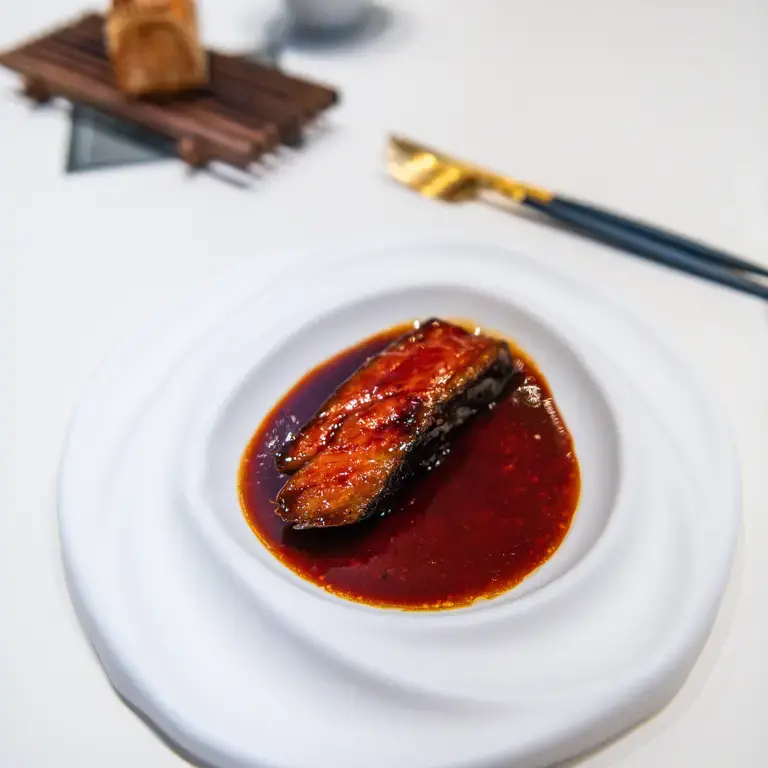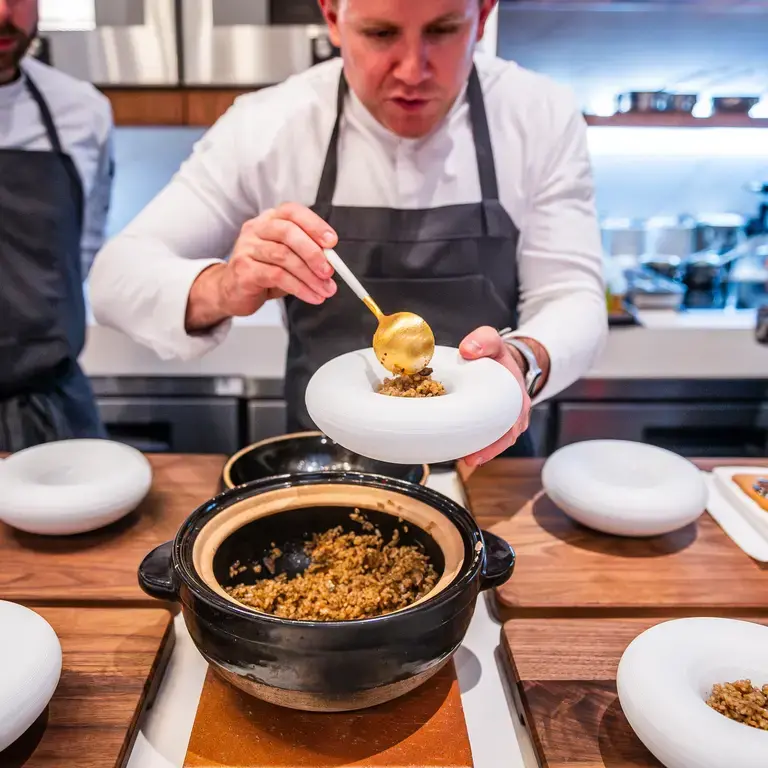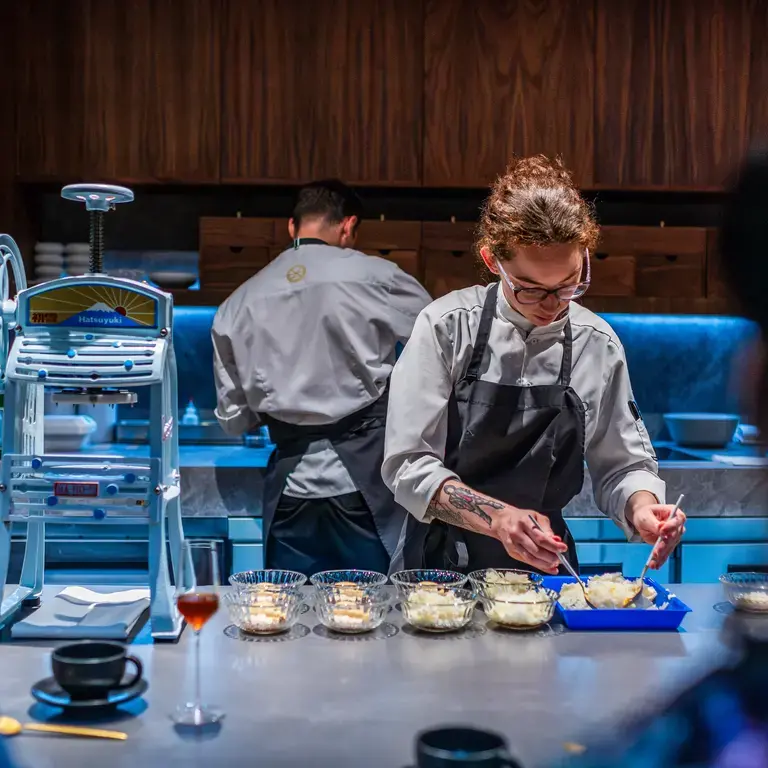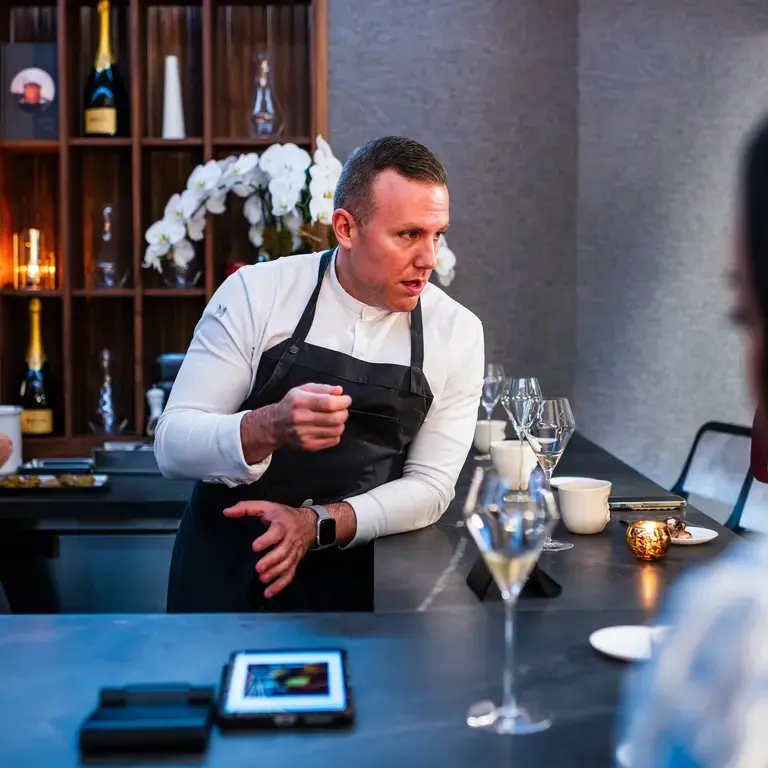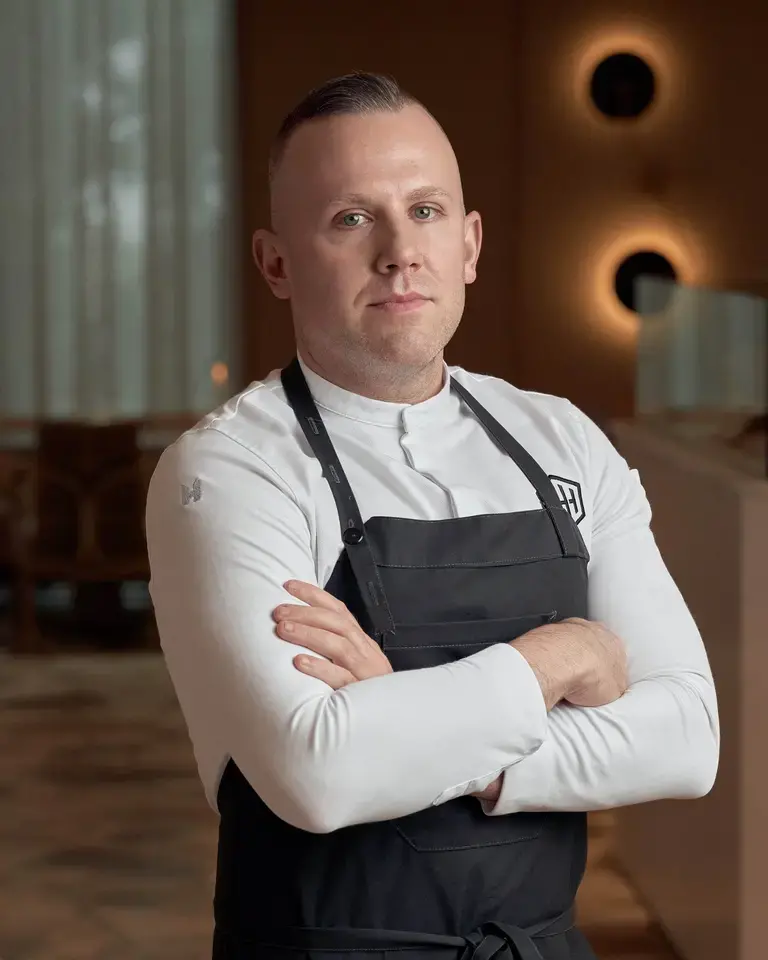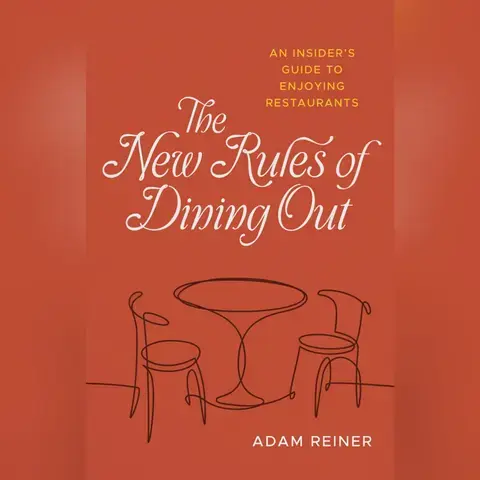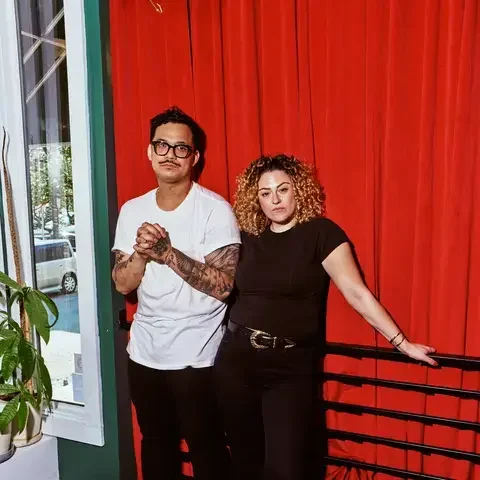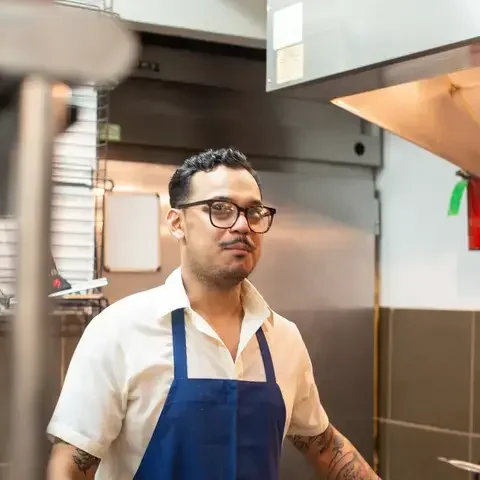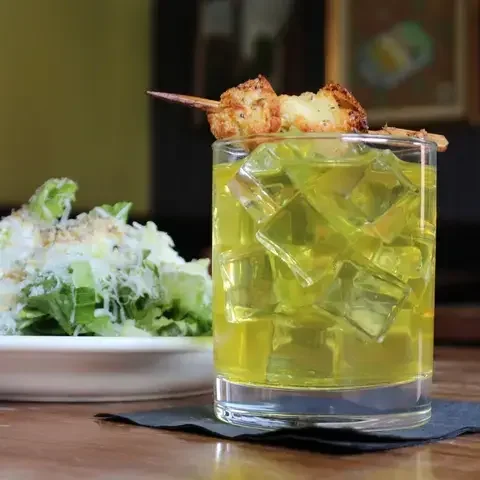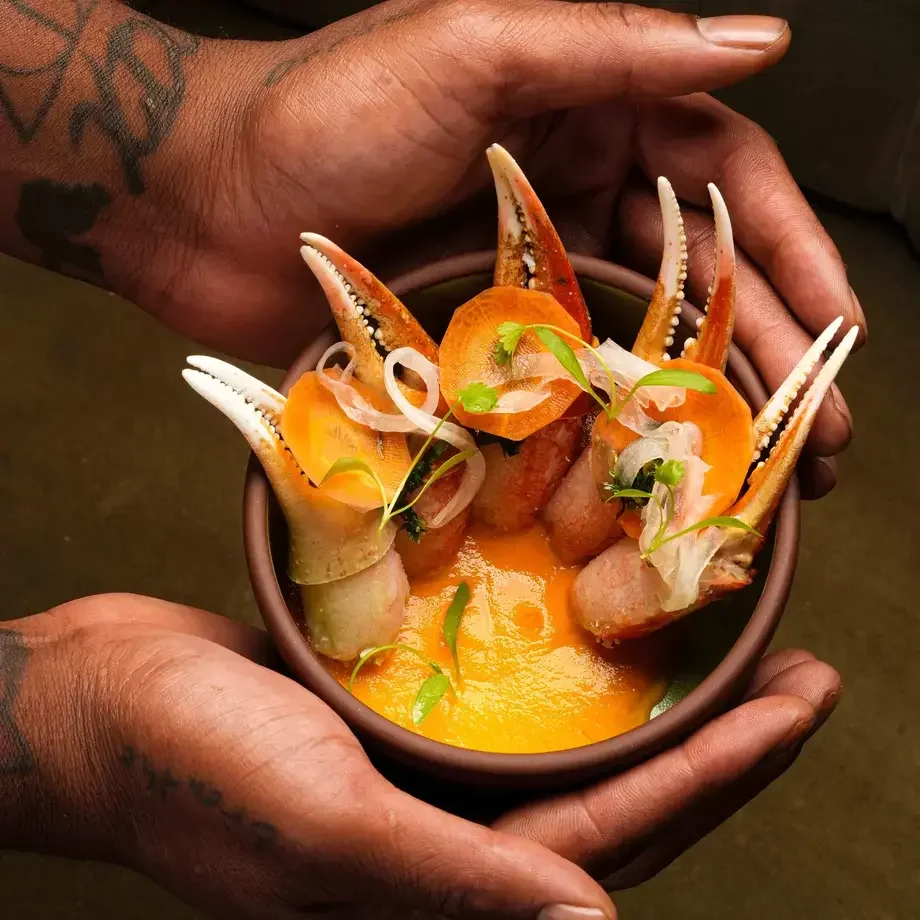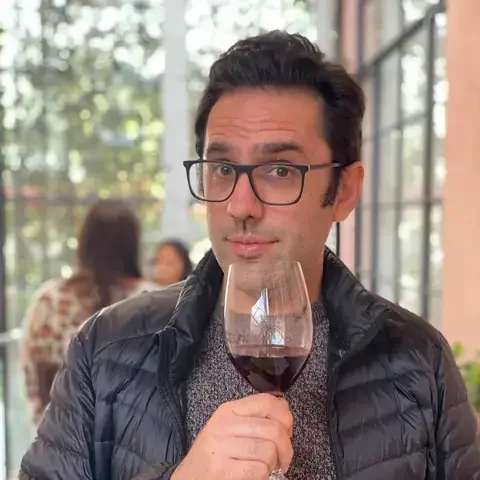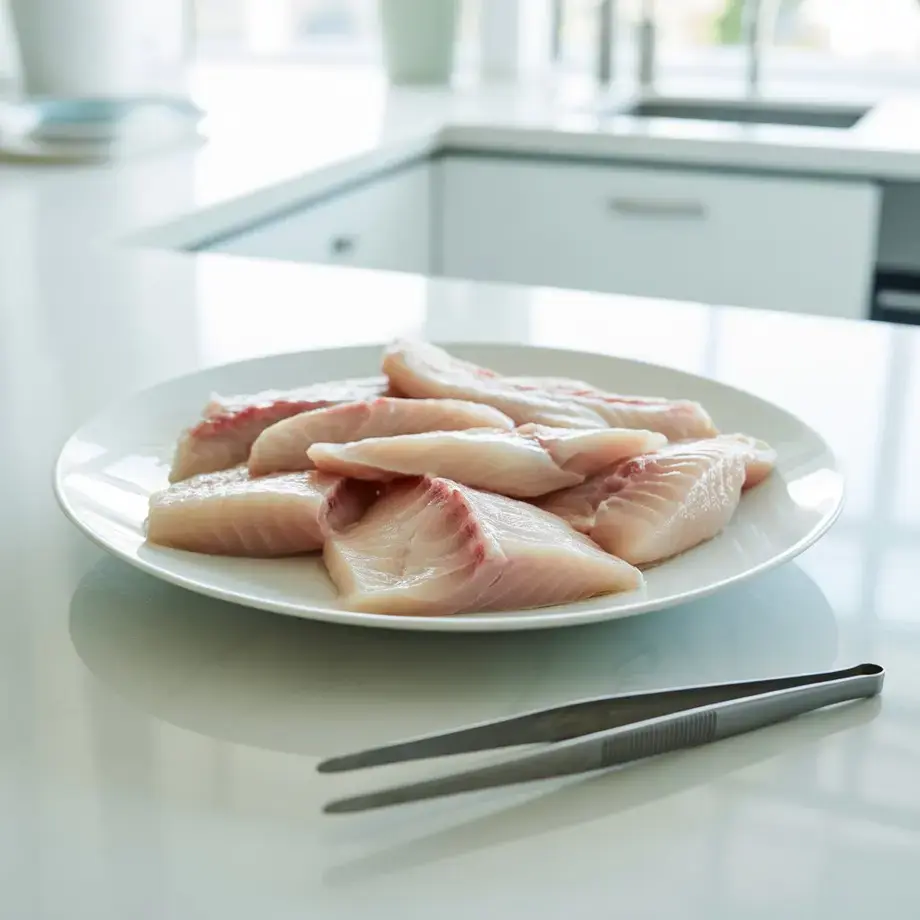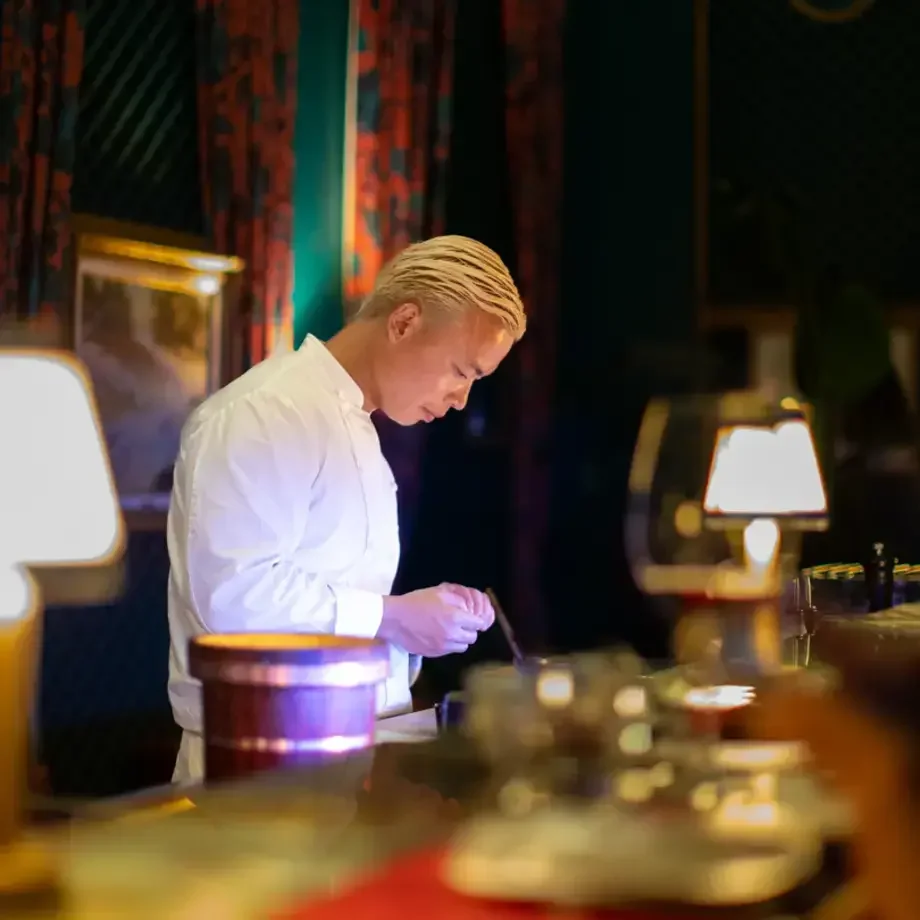A wood-lacquered jewel box, spring-loaded with elaborate, hand-painted chopsticks, has become a mid-course signature at Ryan Ratino’s restaurants, which span Washington D.C. and Florida. I can’t help but squeal each time a server presents the box to diners clustered around the counters at Jônt in D.C., Ômo by Jônt in Orlando, or MAASS in Fort Lauderdale. I always select what to me is the prettiest pair—invariably the pink ones.
At Ômo by Jônt, I dipped a doll-sized wooden spoon into a chawanmushi encircled with flowers, rendered from corn, soy milk, and kombu. I used those same pink chopsticks to pluck soba strands from a broth scented with yuzu kosho, tomato, and shiso. I watched, mesmerized, as servers shaved truffles in unison over lightly sweet, sticky Nanatsuboshi rice cooked with cultured butter in a donabe. Then came wagyu, slicked with shio kombu sauce, and slices of eye-wateringly expensive Crown melon served over ice. Dessert: kakigori made tableside with caramel and kinako, from a Hatsuyaki ice shaver. The menu—presented only at the end—was printed with a gyotaku fish image, painted in ink and pressed to paper.
And yet: “We’re not a Japanese restaurant,” clarified Ratino when I spoke to him recently by phone.
Ratino clarified that Ômo is a contemporary French restaurant, influenced by Japanese ingredients and technique. “Ômo is named for ‘omotenashi,’ the art of hospitality,” he said. At his restaurants, that influence shows up everywhere: warm hand towels, chawanmushi bowls nestled inside blossoms, broth courses that reset the palate mid-meal, and the drama of servers placing dishes in front of diners in unison. The experience closely resembles omakase.
A Fine Line Between Influence and Imitation
Still, Ratino’s restaurants are not exactly omakase—and that distinction is important. The word omakase traditionally refers to a tasting format, where the chef chooses each course, often with intimate interaction at a counter. Today, that term is being stretched to encompass a growing range of dining experiences across the U.S.
I’ve seen it applied to high-end sushi counters hidden inside casual restaurants, and even to a hoagie room at Philly’s Pizzeria Beddia, which was once dubbed the “hoagie omakase.” (That experience has since been renamed a “pizza party,” but it originally cost $495 to book, exclusive of gratuity.)
Tasting menus like these allow chefs a wide range of creative freedom. As a diner, I want to be led through a flow of courses, trusting that the best things a chef can source or imagine will come my way. If we’re using a Japanese term to describe this experience, then so be it.
